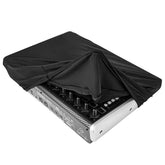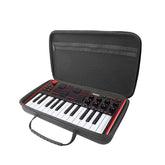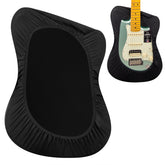Picking Perfection: A Comprehensive Guide to Guitar Picks and Techniques
by
linzz
12 Jan 2024
The guitar pick, also known as a plectrum, derives its name from the pronunciation of the English word "Pick." Picks are not only capable of playing melodies at various speeds but also excel in playing arpeggios and sweeping, making them essential tools for both electric and acoustic guitars!

1. How to Choose a Guitar Pick?
- Shapes and thicknesses vary, and the choice should align with your playing needs. For sweeping on an acoustic guitar, picks with a thickness of 0.5mm to 0.8mm are suitable, while picks with a thickness of 0.7mm to 1.0mm are preferred for arpeggios. Electric guitars generally use picks with a thickness of 1.0mm or more.
- When selecting a pick, don't rely solely on feeling it with your fingers; use your ears to listen and your eyes to observe. Listen to the pleasantness of the pick dropping on a glass surface and observe its bouncing state on a flat surface, much like choosing a ping pong ball.
- Beginners are advised to start with thinner picks, such as 0.5mm or even thinner, as it makes sweeping practice less harsh on the ears. Later, you can experiment with thicker picks, but be mindful that thicker picks may produce less high-end, overpowering lows, and unclear tones during sweeping.

2. How to Hold a Guitar Pick?
- OK Grip: Extend your right index finger, place the pick on the top of the finger, and press the tip with the thumb, leaving about 3mm exposed. Form an OK hand gesture, maintain the posture, move the thumb surface to the side of the index finger, and insert it into the pick.
- Fist Grip: Form a fist with your right hand as if holding an egg, placing the pick in the most balanced position just above the left side of the index finger. Use the center of your thumbprint to press down on the pick's center, maintaining a pleasant "grainy" feel during play and keeping the right hand in a relaxed state.
- For high-speed playing, it is recommended to practice the fist grip because the OK grip may cause issues like pick deflection, loss, or misplacement.

3. Types, Characteristics, Specifications, and Applications of Picks
- Soft (Thin) 0.46-0.58mm: Suitable for sweeping on acoustic guitars, providing a neat and richly layered effect.
- Medium 0.58-0.72mm: Suitable for arpeggios and solos on acoustic guitars, offering clear transparency and strong granularity.
- Hard 0.72-1.2mm: Suitable for heavy metal rhythms on electric guitars, delivering a rough, bold, and energetic effect.
- Ultra-Hard 1.2-1.6mm: Suitable for death metal rhythms on electric guitars, providing a powerful and overwhelming effect.







